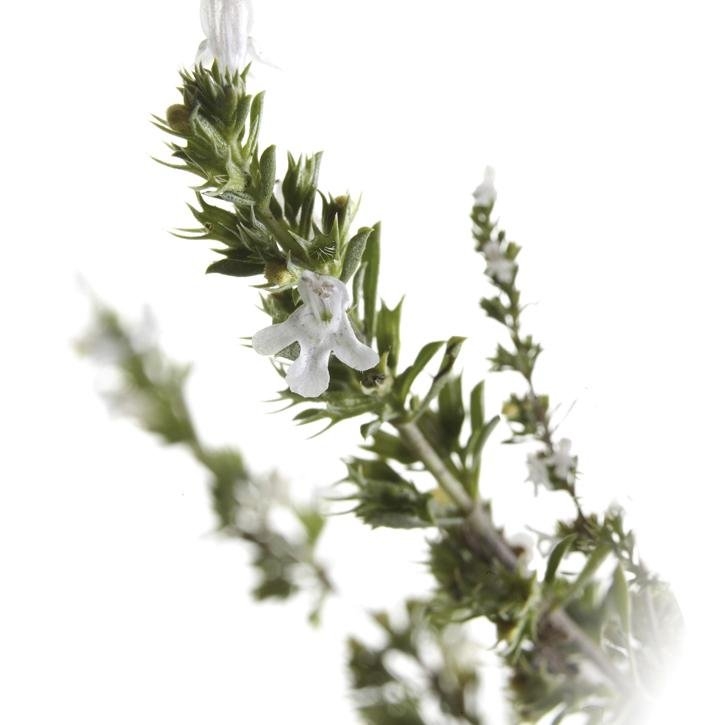The most common used species are: Satureia montana (winter savory or mountain savory) and Satureia hortensis (summer savory). The first one is perennial the second one is annual and has more culinary use as it is softer.
It requires mild and dry weather and good exposure to the sun. It grows up to 2.000 m. It’s not very demanding about soil but prefers light, sandy and calcareous rather than arid. The best soil for it is loose, fertile and deep ones. Native of Europe and North Africa.
> Satureia hortensis L. (summer savory, garden savory): It is a herbaceous annual plant whose height varies between 20 to 40 cm. Leaves are opposite, ovate, soft of a pale gray, generally glabrous and are connected to the stem by rootstock. Their size varies depending on how close they are to the center, as those on the sides are much smaller. The flowers are small, between 2 and 6 mm, grouped, located in the foliate axile, white and pinkish, grow close to the uppermost leaves. It’s agreeable scented and might recall the scent of mint. Fruit is formed by four ovate achenia.
It requires a mild weather and good exposure to the sun. It’s not very demanding about soil but prefers light, sandy and calcareous rather than arid. The best soil for it is loose, fertile and deep ones. Native of Middle Europe.
The flowering plant and leaves.
Internal use:
External use:
Plantas Medicinales. Margarita Fernandez y Ana Nieto. Ed Universidad de Navarra. EUNSA 1982.
Matière Médicale. RR Paris- H. Moyse. Masson 1981.
Guía de Campo de las Flores de Europa. Oleg Polunin. Ediciones Omega S.A. Barcelona, 1977.
Guía de las Plantas Medicinales. Paul Schauenberg y Ferdinand Paris. Ediciones Omega S.A.
El gran libro de las Plantas Medicinales. Editorial Everest. S.A.
Plantes Médicinales des Régions Tempérées. L. Bézanger-Beauquene, Pinkas, Torck, Trotin.
Plantas Medicinales. Thérapeutique-Toxicité. Christiane Vigneau. Masson, Paris 1985.
Fitoterapia: Vademecum de Prescripción. Plantas Medicinales. Colaboran: Asociación española de médicos naturistas. Colegio Oficial de Farmacéuticos de Vizcaya.
Pharmacognosy, Phytochemistry, Medicinal Plants. Jean Bruneton. Lavoisier Publishing.
Plantas Medicinales. El Dioscórides Renovado. Pio Font Quer.
Pharmacopée Française IX Édition.
Farmacognosia 2ª Edición. Jean Bruneton. Ediciones Acribia S.A. 2001.
Bulletin officiel Nº 90/22 bis. Ministère des Affaires Sociales et de
French Public Health Code.
Bross B. Plantas y sus aceites esenciales. Ed. Omega, 1994.
